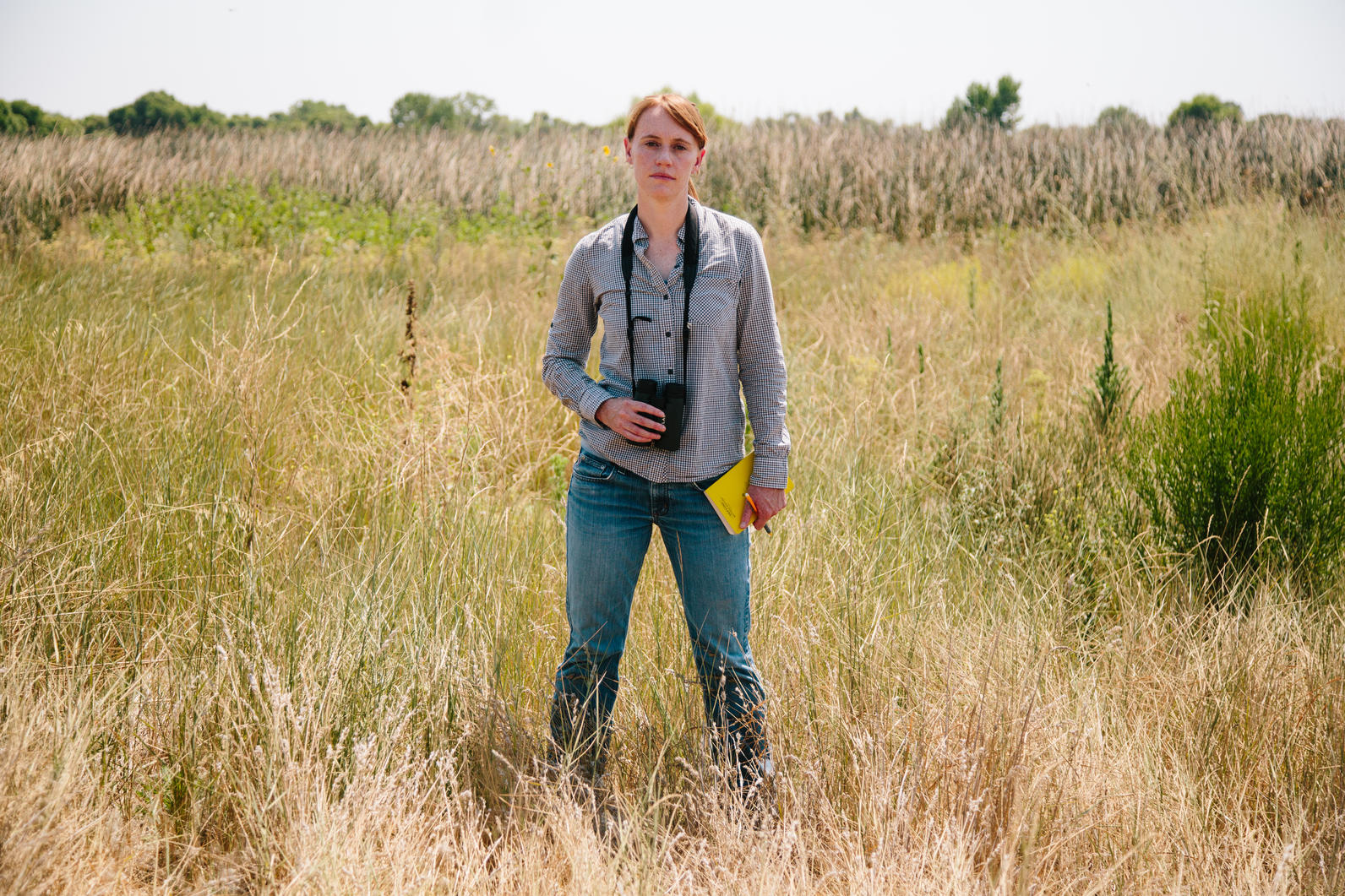Tricolored Blackbird
Latin: Agelaius tricolor
Partnering with landowners to protect birds
Black-necked Stilt flying by granary.
Audubon California's Working Lands Program increases the scope and scale of bird-friendly practices on farms, wetlands and other managed lands in the Central Valley. We do this by cultivating relationships with landowners, advocating for statewide policies that secure water and habitat for birds, and engaging our grassroots network in their communities. Our work provides protection for focal species like the Long-billed Curlew, Tricolored Blackbird, and Western Grebe.
California’s Central Valley has 205,000 acres of managed wetlands, less than 5 percent of what was historically available. The region has some of the most fertile land in the nation and boasts 7 million acres of irrigated farmland. Some types of farms – particularly those with rice and other flood-irrigated field crops – provide important and complimentary habitat to managed wetlands for birds and other wildlife. This synergy of flooded farmland and managed wetlands fundamentally links the health of Pacific Flyway bird populations and California’s farms. Audubon California has worked for 15 years to build partnerships with farmers to protect, enhance, and restore bird habitat on farmland in California’s Central Valley.
The Pacific Flyway, connecting Alaska and South America, is a major migratory pathway for birds. The Central Valley is an important stopover site for birds to feed and rest. Flooded habitat provided by Central Valley farms, refuges, and other managed areas supports between 5-7 million waterfowl and 350,000 shorebirds each year- that’s over 60% of the Pacific Flyway and 20% of the nation's waterfowl population! Over the long-term, the best opportunities to ensure the long-term conservation of birds and other wildlife in the Central Valley are to protect and enhance working landscapes for birds and wildlife while also ensuring a vibrant system of managed wetlands on public and private lands.
Examples of Audubon California's private lands work includes:
The Tricolored Blackbird in California
Grasslands Video on CVPIA with MH from Meghan Hertel on Vimeo.
How we empower ranchers and consumers to protect grassland birds.
An innovative partnership to save California’s vulnerable birds
From fires in the Sierra to clouds of windblown dust at the Salton Sea, the effects of drought driven by climate change are impossible to ignore.
California supports a large population of wintering Sandhill Cranes in its Central Valley and northeastern corner.
In a statement yesterday, The National Audubon Society praised the commitment to conservation in the 2018 Senate Farm Bill. The bill now moves to conference commitee where it will be reconciled with the House Farm Bill passed last week. Audubon urges robust conservation in the final bill.
“The Senate Farm Bill provides important tools to collaborate with producers on working landscapes to address bird habitat, water, and soil health needs,” said David O’Neill, Chief Conservation Officer for National Audubon Society. The National Audubon Society partners with private land managers on bird-friendly conservation strategies as part of the Working Lands Program.
The bill provides funding for the Regional Conservation Partnership Program (RCPP) to bring together farm and conservation groups for mutually benedical collaborations, such as Audubon California's work to protect the Tricolored Blackbird which is now listed as a Threatened under the California Endangered Species Act.
Read Audubon's full statement here and learn more about why the Senate's 2018 Farm Bill is good for birds.
For more on the RCPP and Tricolored Blackbirds in California check out this story from earlier this year.
Audubon California's Bobcat Ranch is a participant in Audubon's Conservation Ranching program. Learn more about that program here.
It's hard to imagine any piece of federal legislation more complex -- or more wonky -- than the Farm Bill. But as this great Audubon story suggests, there's a lot in the Farm Bill for birds. Here in California, Farm Bill helps provide habitat for birds on Central Valley farms and protect rare Tricolored Blackbirds, but that's just the beginning.
Audubon California's Khara Strum ventures out to Sutter County to visit a rice farm that is flooding early to provide habitat for migratory birds. She uses the visit to talk about our work with the Natural Resources Conservation Service and the California Rice Commission to provide more habitat for these birds on farms.

Audubon's new story series "What's a Stake" takes a look at conservation programs threatened by federal budget cuts and environmental policy rollbacks. The series highlights Audubon California's Conservation Program Director, Samantha Arthur, and her work with dairy farmers to protect Tricolored Blackbird colonies, which is funded by a federal program proposed for elimination.
Check out this great story here.
Learn more about our Working Lands Program and efforts to protect theTricolored Blackbird here.
Our newsletter is fun way to get our latest stories and important conservation updates from across the state.
Help secure the future for birds at risk from climate change, habitat loss and other threats. Your support will power our science, education, advocacy and on-the-ground conservation efforts.
California is a global biodiversity hotspots, with one of the greatest concentrations of living species on Earth.